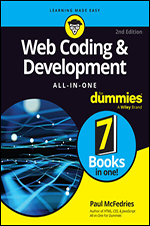Beginning WebGL for HTML5
- 4h 53m
- Brian Danchilla
- Apress
- 2012
Beginning WebGL for HTML5 gets you rapidly up to speed with WebGL, a powerful new graphics language within the browser. You'll render realistic scenes with advanced lighting models, shadows, blending and textures. You'll also use mathematics to model fractals and particle systems. Going beyond that, Beginning WebGL for HTML5 presents advanced vertex and fragment shader usage for creating stunning, top-end results.
You'll benefit from using modern frameworks to rapidly develop complex scenes, and make use of many tools to help improve rendering performance and debugging. Beginning WebGL for HTML5 builds your critical WebGL development skills while being enjoyable at each step of the way.
- Quickly get up to speed with WebGL
- Render realistic scenes
- Work faster with frameworks
- Improve rendering performance
What you’ll learn
- A scene setup and rendering refresher
- Advanced GLSL usages
- Rendering realistic scenes with lighting, blending, reflections, shadows and more
- The current state of WebGL mobile support
- Performance optimizations
- Enhancing productivity by using existing frameworks and loading models
Who this book is for
Beginning WebGL for HTML5 is for the graphics enthusiast who is ready to bring their skillset to the next level and create more realistic, beautiful scenes. Beginning WebGL for HTML5 is a great choice for someone with existing OpenGL or Canvas 2D knowledge wanting to transition to WebGL. It is an excellent choice for those wanting to have high performance graphics coded in minimal time.
About the Author
Brian Danchilla is a freelance PHP and Java developer and author. Danchilla is the coauthor of Pro PHP Programming, a contributing author to HTML 5 Games Most Wanted, and technical reviewer of HTML 5 Animation with JavaScript. He has worked with OpenGL for several years and has a passion for graphics, art and mathematics. WebGL is the great new cross platform, cross device way to program 3D graphics and so naturally, he has been drawn to it.
In this Book
-
Setting the Scene
-
Shaders 101
-
Textures and Lighting
-
Increasing Realism
-
Physics
-
Fractals, Height Maps, and Particle Systems
-
Three.js Framework
-
Productivity Tools
-
Debugging and Performance
-
Effects, Tips, and Tricks




